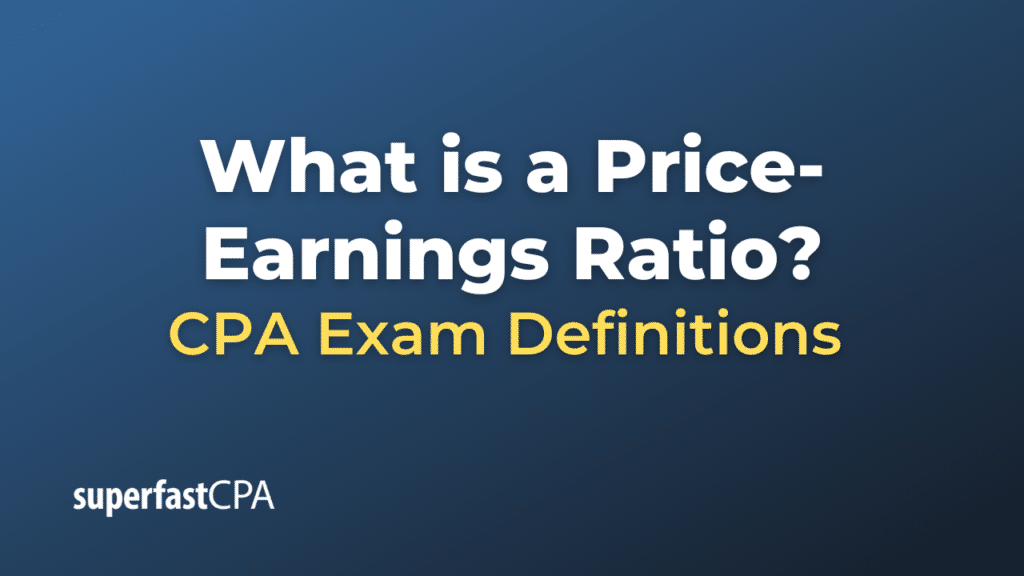Price-Earnings Ratio
The Price-Earnings Ratio (P/E Ratio) is a valuation ratio used by investors and financial analysts to determine the relative value of a company’s shares. It is calculated by dividing the current market price of a stock by its earnings per share (EPS).
The P/E ratio indicates how much an investor is willing to pay for each dollar of a company’s earnings. In other words, if a company has a P/E ratio of 15, it means an investor is willing to pay $15 for each dollar of the company’s earnings.
The P/E ratio is a simple, but powerful tool to benchmark whether a stock is cheap or expensive when compared to its own historical record or other companies. However, it doesn’t take into account the future growth potential of a company, the risk of the company, or the industry norms. Therefore, it should not be used in isolation but rather in conjunction with other financial metrics and information.
Example of a Price-Earnings Ratio
Let’s consider a hypothetical company named TechCo. Suppose TechCo’s stock is currently trading at $100 per share on the stock market. Over the last year, TechCo reported earnings of $5 per share.
To calculate the P/E ratio, we would divide the market price per share by the earnings per share. In this case, that would be $100 (market price per share) divided by $5 (earnings per share), which equals a P/E ratio of 20.
This tells us that investors are currently willing to pay $20 for each dollar of TechCo’s earnings. In other words, investors are willing to pay a premium for TechCo’s stock, perhaps because they expect TechCo’s earnings to grow in the future. Conversely, if TechCo’s P/E ratio was low, it might indicate that investors expect TechCo’s earnings growth to be low, or that they perceive the stock as undervalued.
Again, it’s important to note that the P/E ratio should not be used in isolation. It’s more meaningful when comparing it against P/E ratios from other companies within the same industry, or against the company’s own historical P/E ratios. Other factors, such as growth rates, financial health, and market conditions, should also be considered.













